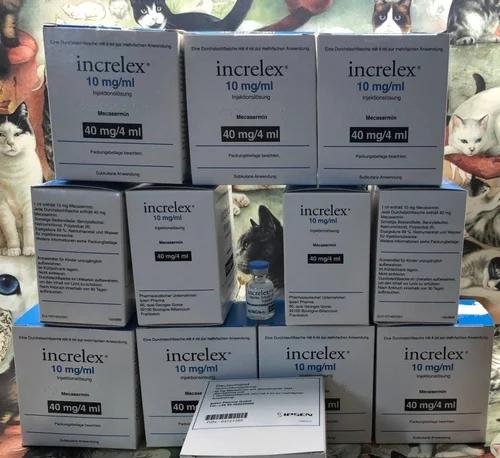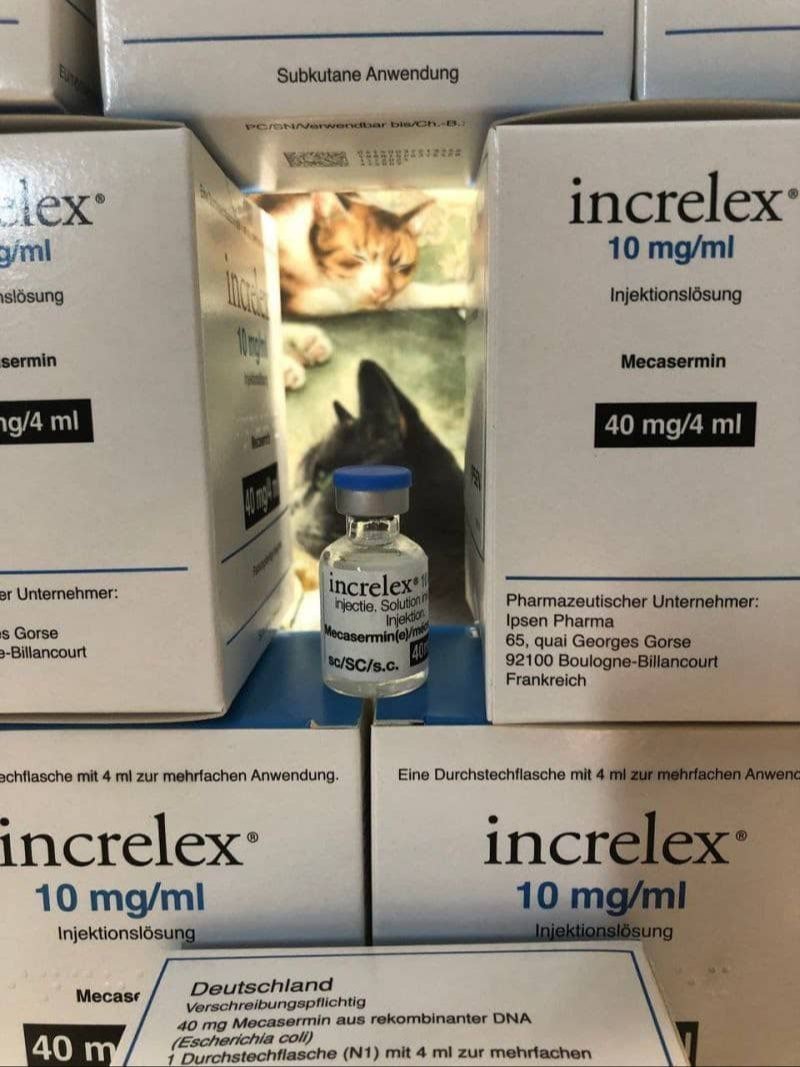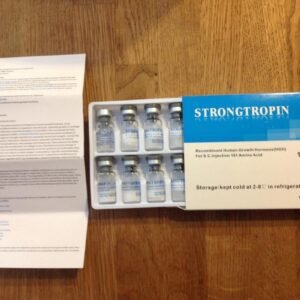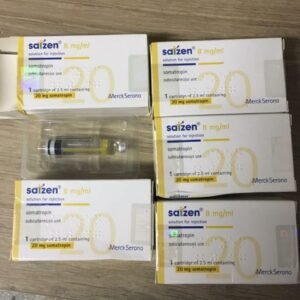Understanding Increlex: A Lifeline for Growth Failure in Children.
What is Increlex?
Increlex, a prescription medication known generically as mecasermin, is primarily indicated for the treatment of growth failure in children who possess a deficiency in insulin-like growth factor-1 (IGF-1). This synthetic form of IGF-1 was developed to address the specific needs of children who are unable to produce adequate levels of this critical growth factor due to genetic disorders or other conditions affecting growth. By mimicking the action of natural IGF-1 in the body, Increlex plays a pivotal role in stimulating growth and promoting overall development.
Insulin-like growth factor-1 (IGF-1) is a polypeptide hormone that promotes cell growth and development, and it is primarily produced in the liver in response to growth hormone (GH) stimulation. Its importance in childhood growth is profound, as IGF-1 helps to facilitate various physiological processes, including cell division, differentiation, and apoptosis. In children with growth hormone deficiency, the lack of IGF-1 results in stunted growth; this is where Increlex becomes an essential therapeutic option.
Upon administration, Increlex binds to IGF-1 receptors found on various cells throughout the body, thereby activating signaling pathways that encourage growth in both length and mass. Clinicians utilize Increlex not only to enhance linear growth but also to improve metabolic parameters in affected children. The drug’s development stems from extensive research aiming to create a reliable substitute for those who are unable to synthesize sufficient levels of genetically derived IGF-1.
Through its unique mechanism of action, Increlex offers a lifeline to patients suffering from growth failure, ultimately aiding in achieving growth milestones and enhancing the quality of life for children in need of treatment.
The Importance of IGF-1 for Growth
Insulin-like Growth Factor 1 (IGF-1) is a crucial hormone that plays a significant role in childhood growth and development. Produced primarily in the liver, IGF-1 is stimulated by growth hormone (GH) and is vital for stimulating cellular growth and division in various tissues throughout the body, particularly in bone and muscle. The presence of adequate levels of IGF-1 is essential for ensuring that children reach their full growth potential during formative years.
The regulation of IGF-1 levels is influenced by multiple factors, including nutrition, age, and hormonal balance. A well-balanced diet rich in proteins and calories is necessary for maintaining optimal IGF-1 production. Any deficiencies in nutrients can negatively impact growth, leading to reduced IGF-1 levels and, consequently, growth failure in children. Furthermore, age plays a role in IGF-1 levels, as they tend to peak during puberty, aligning with periods of rapid growth. Certain medical conditions can also result in decreased production or increased degradation of IGF-1, further complicating growth patterns.
Growth hormone secretion is another significant factor affecting IGF-1 levels. Conditions such as Growth Hormone Deficiency (GHD) can lead to insufficient IGF-1 production, causing noticeable delays in growth and development. Other endocrine disorders and chronic illnesses may also disrupt the GH-IGF-1 axis, exacerbating growth failure. Thus, monitoring and managing IGF-1 levels are crucial in addressing short stature and other growth-related concerns.
Understanding the importance of IGF-1 provides insight into the vital role this hormone plays in influencing growth outcomes in children. An awareness of the potential causes of deficiencies and their implications sets the foundation for exploring treatment options such as Increlex, which can aid in mitigating the challenges associated with growth failure.
Indications for the Use of Increlex
Increlex, also known as mecasermin, is primarily indicated for the treatment of growth failure in children who exhibit significant deficiencies in insulin-like growth factor 1 (IGF-1). This condition may arise due to various factors, including growth hormone deficiency or genetic disorders that impact growth hormone signaling. Children with severe primary IGF-1 deficiency are particularly affected by such deficiencies, leading to disruptions in their growth patterns. The correct diagnosis is crucial, as this determines the appropriate use of Increlex in managing growth challenges.
The diagnosis of growth failure is typically established through a combination of clinical evaluations, biochemical assessments, and physical examinations. Providers often look for specific growth metrics that fall below expected percentiles for age and sex. In addition, measurements of serum IGF-1 levels are taken to confirm deficiencies, guiding the decision to prescribe Increlex. The administration of this medication directly addresses the underlying issue of inadequate IGF-1, thus promoting linear growth by simulating natural IGF-1 action in the body.
The population most commonly affected by growth deficiencies includes children with genetic syndromes, such as Turner syndrome or Down syndrome, as well as those with chronic illnesses that adversely affect growth patterns. Studies suggest that many patients who might benefit from Increlex remain undiagnosed, which highlights the importance of awareness and comprehensive screening for growth disorders in the pediatric population. The medication works effectively when used in conjunction with appropriate diagnostic measures. In summary, Increlex serves as a vital treatment for children suffering from growth failure due to insufficient levels of IGF-1, ensuring they have the opportunity for normal growth and development.
Administration and Dosage of Increlex
Increlex, generically known as mecasermin, is administered via subcutaneous injection. This method ensures that the medication is delivered directly into the fatty tissue beneath the skin, allowing for optimal absorption and effectiveness. It is crucial for caregivers or healthcare professionals to receive proper training on injection techniques to minimize discomfort and complications for the child receiving treatment. The recommended injection sites may include the thigh, abdomen, or upper arm, with rotations advised to prevent localized reactions.
The dosage of Increlex is typically tailored to the individual child’s weight and growth needs, with healthcare providers often starting with a dose of 0.08 to 0.12 mg/kg injected twice daily. Clinicians may adjust the dosage based on the child’s response to treatment and growth progress. It is essential to adhere closely to the prescribed dosage recommendations, as deviations can affect the efficacy of the treatment and the child’s overall health. Regular monitoring of growth parameters is highly recommended during the treatment course, and healthcare providers may perform routine assessments every three to six months to evaluate the child’s growth rate and adjust dosage if necessary.
The importance of consistent administration cannot be overstated, as missing doses can lead to fluctuations in growth patterns. In such instances, if a dose is missed, caregivers should administer it as soon as they remember. However, if it is almost time for the next dose, the missed dose should be skipped, and the regular schedule resumed. Increlex should not be administered more than twice daily to ensure safety and minimize the risk of adverse effects.
Overall, adherence to the administration regimen and consistent monitoring of growth during Increlex treatment is vital in optimizing the therapeutic outcomes for children struggling with growth failure.
Potential Side Effects and Considerations
Increlex (mecasermin) serves as a crucial therapy for children diagnosed with growth failure due to severe primary insulin-like growth factor deficiency. While this medication can offer significant benefits in achieving a child’s growth potential, it is important for both patients and caregivers to be aware of potential side effects and necessary considerations during treatment.
Common side effects associated with Increlex include hypoglycemia, or low blood sugar, which can manifest as dizziness, sweating, confusion, and irritability. Patients may also experience injection site reactions such as pain, redness, or swelling, which while typically mild, do require monitoring to prevent complications. Additionally, swelling of the limbs or signs of fluid retention may occur, necessitating discussions with healthcare providers for proper management strategies.
Caregivers should be vigilant regarding any pre-existing medical conditions, particularly those related to glucose metabolism or active tumors, as these may interact with the effects of Increlex. It is imperative to disclose these conditions to healthcare professionals prior to initiating therapy. Regular follow-up appointments are vital for effectively monitoring growth progress and managing side effects. Frequent assessments help ensure that any adverse reactions or health concerns are addressed swiftly, maintaining the safety and effectiveness of the treatment.
Patients receiving Increlex should also be informed about the importance of adherence to prescribed dosing schedules and dietary guidelines to minimize the risk of hypoglycemia. Personalized treatment plans are beneficial for accommodating individual needs and optimizing health outcomes. By remaining proactive and communicative with healthcare providers, families can ensure a greater likelihood of successful treatment and enhance the child’s quality of life.





